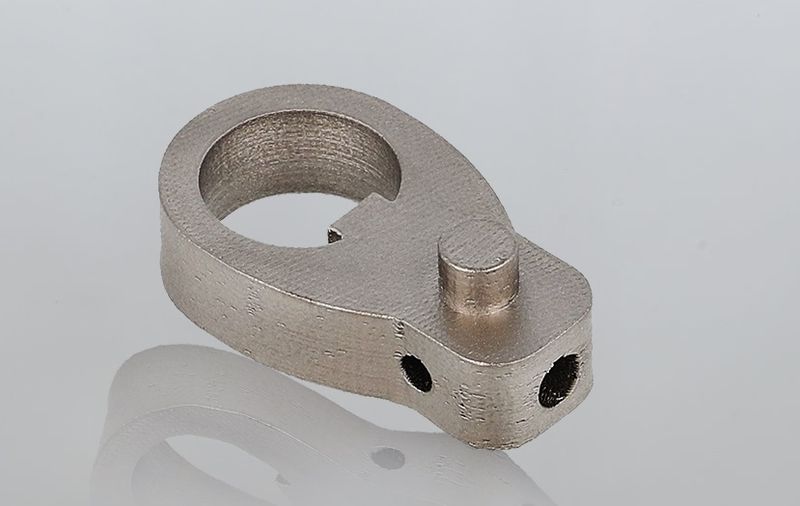The BASF Ultrafuse 17-4 PH is a metal-polymer composite filament designed specifically for FFF printing. The metal component is chromium-copper martensitic precipitation hardened stainless steel, also referred to as Type 630. It is magnetic and fully heat treatable to obtain a high level of strength and hardness. The Ultrafuse 17-4 PH parts maintain their mechanical properties and corrosion resistance at temperatures up to 315 °C. The filament comprises metal powder with a polymer binder, eliminating the potential risk of metal particles exposure, typical of powder-based metal printing technologies. Due to its compatibility with most open-system FFF 3D printers, the Ultrafuse 17-4 PH makes metal 3D printing much easier and affordable than ever before.
To print with the Ultrafuse 17-4 PH, your printer should be equipped with a heated print bed, the temperature is 90–120 °C, and the optimal extruder temperature is 230–250 °C. Abrasion-resistant nozzles with a diameter of 0.4 mm or more are recommended to avoid rapid wear. Make sure the nozzle is completely clean and does not have any remnants of previously used plastic filament. The first layer adhesion is extremely important, so the manufacturer recommends using a glass print bed surface with a layer of adhesive. For better adhesion you may need to build a brim or a raft, that will also help you to reduce warping issues. And the cooling fans should be turned off while printing to avoid warpage or layer delamination.
Metal parts built with the BASF Ultrafuse 17-4 PH acquire the highest level of strength and hardness through the debinding and sintering process developed for traditional metal injection molding. In the catalytic debinding process most of the polymer binder is removed, and the following sintering at the temperature just below the melting point of the metal removes the secondary binder, leaving a pure metal part with outstanding mechanical properties. You can have your green parts debound and sintered with the help of an outsource service, in case you do not have the appropriate equipment. Sintering process causes noticeable part shrinkage, so it is strongly advisable to scale up your digital model to get the part with the expected dimensions. The scaling factor for XY axis is 1.20 and for Z axis is 1.26.
Excellent strength and corrosion resistance make the BASF Ultrafuse 17-4 PH filament a perfect material for a wide range of applications, such as tooling, jigs and fixtures, and functional parts and prototypes manufacturing. It is ideal for the petrochemical, aerospace, automotive, medical, and a lot of other industries.

The BASF Ultrafuse 17-4 PH 1.75 mm metal 3D printing filament is sold in 3 kg spools. It comes vacuum-sealed with desiccant.

Update your browser to view this website correctly. Update my browser now